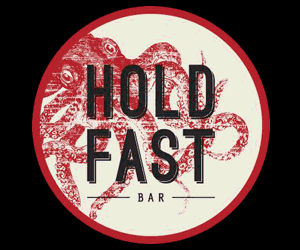Andrea Sandor investigates the public spaces sold off by Manchester City Council between 2014-2018 and finds a hefty discrepancy
Earlier this year, The Bureau for Investigative Journalism (TBIJ) published a report on the public spaces sold off by Councils between 2014-2018. According to the Sold From Under You report “The local government funding crisis has become so dire that councils are being forced to sell thousands of public spaces, such as libraries, community centres and playgrounds.” In some cases, councils have used the money raised to fund redundancies, a double whammy for their communities.
So how about Manchester City Council? Happily, according to the data, there are no stories here of shutting libraries or redundancies. Being a council with a growing city has its perks.
But let’s take a look at the data anyway. I for one was curious to know more about the 707 public spaces that garnered the Council nearly £43m between 2014-2018. (The number of spaces and money earned is actually far higher - but I’ll come on to that in a bit.)
And here comes the twist... while the total for acquired buildings and land assets came to around £42m, the total for combined capital receipts came to £117m
Of the 707 properties, the greatest proportion - 62% - were Right to Buy “disposals” raising nearly £24m. This is unsurprising, considering the “fire sale” of Right to Buy homes since 2012 when the government increased the maximum discount on property to £75,000 (this has since increased to £100,000 in some parts of the country).
This effectively meant that people could buy their council homes for half the market price, leading to the number of homes sold off increasing by 409%. And why wouldn’t you buy your home for half the market price if you could? The downside for society is the alarming loss of social housing. Without the ability to borrow to build replacement homes until recently, this put councils between a hard place and a rock – and significant challenges still stand in the way. Moreover, many of these Right to Buy homes have ended up in the hands of private landlords.

Next up, 28% of public spaces sold were “disposals of freehold by private treaty”, resulting in nearly £21m for the Council. These kinds of spaces fall under a few different categories and also include the biggest ticket items on the list.
Topping the list is a car park that was sold to Mayfield Development Partnership for £4m. Land at Platt Lane Complex was sold to Manchester Metropolitan University for £3m, after the Council acquired it from Man City Football Club for the same price (some Moss Side residents weren’t happy with the University’s plans to build student accommodation here and raised objections). And, finally, Lynwood Residential Unit - a children’s home - was closed and sold for £1.5m.

Many of the other properties in this category appear to be part of the controversial national Housing Market Renewal Pathfinder programme, in which blighted neighbourhoods in nine designated areas around the North and the Midlands were identified for demolition and redevelopment to “renew failing house markets.”
A trip down memory lane with Googlemaps Streetview to 2008 will reveal eerie rows of tinned up terrace houses which have miraculously transformed into shiny detached houses in the past couple of years. Was the programme successful? It depends on who you ask.
We’re nearly there now. 9% of the properties were “Leasehold Reform Act Disposals,” in which the Council sold the leasehold (the rights to the land the property sits on) to the homeowner. The final 1% were “Disposals of Freehold by Way of Exchange”.
And here comes the twist. This information was obtained by TBIJ via a Freedom of Information Request in which they requested a list of acquired buildings and land assets. However, TBIJ also asked for a list of combined capital receipts (incoming cash flow) raised during the same period. In theory, this figure should be the same. And yet while the total for acquired buildings and land assets came to around £42m, the total for combined capital receipts came to £117m.
And now you know my life for the past few months. In March, I lodged a query with the Council to explain the discrepancy. It’s taken until last week to work it out for me. Yes, they say, the figures should’ve been much higher, and here in all its specificity is the breakdown: £4m is due to overage (the profit was higher than expected), £54m due to housing receipts (most likely more Right to Buy), and £17m for land options (land sold to developers).
So there you have it, £117m raised by selling off public assets. What has this money then been spent on? Well that will have to be for another story.
But before I depart, I have a bit more context and info to share with you.
Prior to 2016, money raised by councils from selling public assets could only be used for buying new ones. Then George Osborne relaxed the rules so that councils could use the money on cost-cutting measures. Since then councils have spent £381m in this way, a third of which has been spent on redundancies. Bristol, in particular, made headlines where redundancies jumped ten-fold the following year, from 39 to 401.
These decisions aren’t easy, as Simon Edwards, director of the County Councils Network, told TBIJ. “If given the choice – would you consider selling a disused council building to raise funds to deliver a balanced budget – or would you retain that asset for potential future use but instead cut adult social care, or raise charges for care packages?”
Manchester City Council, luckily, doesn’t appear to be in this position. But what of the other Greater Manchester councils? While Manchester City Council provided full data to TBIJ, Salford, Trafford, Stockport, and Tameside only provided partial data.
But I’m most concerned about Oldham where there’s no data provided at all. As a result, TBIJ have asked for their request to be reviewed internally.
Watch this space - I’ll let you know when more data comes through - although I wouldn’t hold my breath.















